
Welcome to Verywellkitchen – Simplify Your Kitchen Adventures!
Are you ready to embark on a flavorful journey through the world of healthy cooking and kitchen appliances? Look no further! Verywell kitchen is your go-to resource for all things culinary, designed to ignite your passion for cooking, inspire your creativity, and simplify your kitchen adventures.
We believe that the heart of every home is the kitchen. It's a space where creativity takes shape, where ingredients come to life, and where delicious memories are made. Whether you're a seasoned chef or just starting to explore the joys of cooking, our blog is here to empower you with knowledge, share exciting ideas, and guide you through the world of modern kitchen tools.

Designing Healthy Kitchen With Appliance
Designing a perfect kitchen with appliances involves careful planning, taking into consideration both aesthetics and functionality. Here's a step-by-step guide to help you design an ideal kitchen
Start by understanding your cooking habits, lifestyle, and family size. Determine what appliances are essential for your cooking style. Common appliances include a stove/oven, refrigerator, dishwasher, microwave, and possibly others like a toaster, blender, or coffee maker.
Layout and Space Planning
Consider the kitchen's layout and available space. The three most common kitchen layouts are the U-shaped, L-shaped, and galley (straight-line) layouts. The layout should facilitate an efficient work triangle among the sink, stove, and refrigerator.

Appliance Placement
Place major appliances strategically. The sink, stove, and refrigerator should form a functional triangle. Ensure that there's counter space near each appliance for meal prep.
Appliance Sizing
Choose appliances that fit well within your kitchen's dimensions. Oversized appliances can overwhelm a small space, while undersized ones might not meet your needs.
Style and Aesthetics
Select appliances that match your kitchen's overall style and color scheme. You can choose from stainless steel, black, white, or even custom panel appliances that blend with cabinetry.
Energy Efficiency
Opt for energy-efficient appliances with ENERGY STAR ratings. They not only help the environment but also save on utility bills in the long run.
Ventilation
Ensure proper ventilation for cooking areas, especially if you have a powerful stove or cook frequently. A range hood or ventilation system helps remove odors, smoke, and excess heat.
Appliance Placement
Refrigerator: Place it near the entrance for easy access. Keep it away from direct sunlight and heat sources.
Stove/Oven: Position it near the prep area and countertop space. Ensure proper ventilation and consider safety when placing it near traffic paths.
Sink/Dishwasher: Place them near each other to streamline dishwashing. If possible, position the sink under a window for natural light.
Countertop Space: Design ample countertop space for food preparation near appliances. Islands or peninsulas can provide additional workspace and seating.
Storage
Plan storage for small appliances that aren't used daily, like blenders or mixers. Consider appliance garages or dedicated cabinet spaces.
Smart Appliances
If desired, integrate smart appliances that offer advanced features and connectivity. These can include smart refrigerators, ovens with remote control, and voice-activated assistants.
Lighting: Adequate lighting is crucial. Incorporate task lighting above work areas, ambient lighting for overall illumination, and accent lighting to highlight design elements.
Safety Considerations
Place appliances away from areas prone to spills and water sources. If you have children, consider safety locks on ovens and stovetops.
Set a budget for appliances, considering their quality, features, and brand reputation. Prioritize spending on appliances that you use frequently.
5 Things To Consider When Designing Healthy Kitchen
Designing healthy kitchen involves a combination of functionality, aesthetics, and practicality. Here are five important things to consider when designing a kitchen:
Layout and Flow
The kitchen layout should promote efficient movement and workflow. The most common kitchen layouts include the U-shaped, L-shaped, galley, and open-concept designs. Consider the "kitchen work triangle," which involves positioning the sink, stove, and refrigerator in a triangular arrangement to minimize unnecessary movement.
Functionality and Ergonomics
Design the kitchen with the user's convenience in mind. Keep frequently used items within easy reach, place appliances at appropriate heights to avoid strain, and ensure that there's enough counter space for food prep. Incorporate storage solutions like cabinets, drawers, and pantry space to keep the kitchen organized.
Appliance Placement
Determine the placement of major appliances such as the stove, refrigerator, dishwasher, and microwave. These appliances should be strategically located to allow for easy access, proper ventilation, and minimal interference with the workflow. Consider built-in appliances for a streamlined look.
Materials and Finishes
Choose durable and easy-to-maintain materials for countertops, flooring, backsplashes, and cabinetry. Consider factors like heat resistance, water resistance, and ease of cleaning. Additionally, select finishes and colors that complement the overall design and create a cohesive look.
Lighting and Ventilation
Proper lighting is essential for functionality and ambiance. Incorporate a mix of task lighting (for food prep areas), ambient lighting (for general illumination), and accent lighting (for visual interest). Adequate ventilation, through mechanisms like exhaust fans or range hoods, is crucial to remove odors, steam, and grease from the kitchen.
The personal preferences and lifestyle needs play a significant role in kitchen design. It's a good idea to consult with a professional kitchen designer or architect to ensure that your kitchen design addresses your specific requirements and creates a space that is both aesthetically pleasing and highly functional.
Creating a healthy kitchen environment involves incorporating elements that promote cleanliness, safety, and well-being. Here are some elements to consider for a healthy kitchen lifestyle:
Good Ventilation
Proper ventilation helps remove cooking odors, smoke, and excess moisture, improving indoor air quality. Install a range hood or exhaust fan to ensure adequate air circulation and minimize the buildup of pollutants.
Natural Light
Maximize the use of natural light in your kitchen. Natural light not only enhances the aesthetics but also contributes to a positive and uplifting atmosphere. It can also help reduce the need for artificial lighting during the day.
Non-Toxic Materials
Choose materials that are low in volatile organic compounds (VOCs) to minimize indoor air pollution. Opt for paints, finishes, and cabinetry made from low-VOC or VOC-free materials to create a healthier indoor environment.
Easy-to-Clean Surfaces
Select materials that are easy to clean and resistant to stains, bacteria, and mold growth. Smooth and non-porous surfaces for countertops, backsplashes, and flooring help prevent the accumulation of dirt and germs.
Filtered Water System
Install a water filtration system in your kitchen to ensure access to clean and safe drinking water. Filtered water can also be used for cooking and washing produce.
Separate Cutting Boards
Use separate cutting boards for raw meat, poultry, and vegetables to prevent cross-contamination and the spread of bacteria.
Waste Management
Proper waste management is important for maintaining hygiene. Have separate bins for different types of waste (e.g., recyclables, compost, regular waste) and empty them regularly.
Regular Cleaning Routine
Establish a regular cleaning routine to keep surfaces, appliances, and utensils clean and free from bacteria and germs. Clean up spills promptly to prevent mold and bacterial growth.
Safe Food Storage
Invest in proper food storage containers that are airtight and can help keep food fresh and prevent contamination. Store raw foods separate from cooked foods to avoid cross-contamination.
Use of Safe Cookware
Choose cookware made from materials that are safe and non-toxic, such as stainless steel, cast iron, or ceramic. Avoid using scratched or damaged non-stick cookware.
Organized Storage
Keep your kitchen organized to minimize clutter. Proper organization can prevent the accumulation of dust and make it easier to clean and maintain a healthy environment.
Regular Appliance Maintenance
Keep your kitchen appliances clean and well-maintained to ensure they operate efficiently and hygienically. Regular maintenance can also extend the lifespan of your appliances.
By incorporating these elements into your kitchen design and daily routines, you can create a healthier and more enjoyable kitchen environment that supports your lifestyle.
What Food Storage Are Safe for Good Kitchen Quality?
Using safe food storage containers is important to ensure that your food remains fresh, free from contamination, and doesn't interact with potentially harmful materials. Here are some types of food storage containers that are generally considered safe for a good kitchen:
Glass Containers
Glass containers are non-toxic and non-reactive, making them an excellent choice for food storage. They are easy to clean, resistant to stains and odors, and can be used to store both cold and hot foods. Look for containers with airtight lids for optimal freshness.
Stainless Steel Containers
Stainless steel containers are durable, resistant to corrosion, and do not react with acidic or alkaline foods. They are suitable for storing a wide range of foods, including liquids. Stainless steel containers can also be used for reheating in the oven or on the stovetop.
Plastic Containers (BPA-Free)
While plastic containers are convenient, it's important to choose BPA-free options. BPA (bisphenol-A) is a chemical that can leach into food and has been associated with health concerns. Look for containers labeled as "BPA-free" to reduce the risk of exposure.
Silicone Containers
Silicone containers are flexible, lightweight, and heat-resistant. They are a good option for storing both cold and hot foods. Silicone is generally considered safe for food contact and is non-reactive.
Ceramic and Porcelain Containers
Ceramic and porcelain containers are safe for food storage and can be used to store and reheat food in the microwave or oven. Make sure they are free from lead or other harmful materials.
Bamboo or Wood Containers
Bamboo or wood containers are eco-friendly options for dry food storage, such as grains, pasta, and snacks. They are less suitable for liquids or wet foods as they can absorb moisture and develop odors over time.
When selecting food storage containers, keep the following tips in mind..
1. Airtight Seals
Choose containers with tight-fitting lids to maintain freshness and prevent moisture from entering or escaping.
2. Transparent
Opt for transparent containers or those with clear lids to easily identify the contents without opening them.
3. Stackable
Containers that are stackable save space in your kitchen and refrigerator.
4. Microwave and Freezer Safe
Ensure that the containers are safe for use in the microwave, freezer, and dishwasher, depending on your needs.
5. Labels
Consider labeling containers with the date and contents to help you keep track of what's inside and when it was stored.
6. Avoid Old or Damaged Plastic
If you choose to use plastic containers, avoid using old or damaged ones that may have developed cracks, scratches, or signs of wear.
Using proper food storage practices, such as sealing containers tightly, storing perishables in the refrigerator, and consuming food within recommended timeframes, is essential for maintaining food safety and quality.
Which Cookware Is Best for Health?
Cookware can have an impact on the healthiness of your cooking, as certain materials can react with food and release potentially harmful substances. Here are some cookware options that are generally considered healthy and safe.
Stainless Steel: Stainless steel cookware is a popular choice for its durability, resistance to corrosion, and non-reactive properties. It doesn't leach harmful chemicals into food and can be used for a wide range of cooking methods. However, make sure you choose high-quality stainless steel to ensure that it doesn't contain any alloys that could potentially react with acidic foods.
Cast Iron: Cast iron cookware is known for its excellent heat retention and even heat distribution. Cooking in cast iron can also provide a small amount of dietary iron to your food, which can be beneficial for those with iron deficiency. Properly seasoned cast iron pans become naturally non-stick, reducing the need for excessive amounts of oil. However, cast iron requires seasoning and proper care to maintain its non-stick surface and prevent rusting.
Ceramic and Glass: Ceramic and glass cookware are non-reactive materials that won't leach harmful substances into your food. They are great for baking, roasting, and oven cooking. However, they can be more fragile and may not distribute heat as evenly as other materials.
Anodized Aluminum: Anodized aluminum cookware has been treated to create a non-reactive surface that resists leaching. This type of cookware is generally safe for cooking, but it's important to ensure that the anodized coating is intact to prevent any aluminum from coming into contact with food.
Copper (with Stainless Steel or Tin Lining): Copper cookware, when lined with stainless steel or tin, provides excellent heat conductivity. However, it's important to ensure that the lining is intact to prevent copper from leaching into your food, which can be harmful in excessive amounts.
Silicone and Bamboo Utensils: While not exactly cookware, using silicone or bamboo utensils can be a healthier option than metal utensils that could scratch and damage non-stick surfaces. These materials are gentle on cookware and won't introduce harmful particles into your food.
It's important to note that while these materials are generally considered safe, safe cooking practices also play a significant role in maintaining the healthiness of your meals. Avoid overheating cookware, as this can cause degradation of non-stick surfaces or the release of harmful fumes in some cases. Regular maintenance and proper cleaning of your cookware are also essential to ensure its longevity and safety.
When choosing cookware, make sure to read manufacturer information and reviews to ensure the product's safety and quality. Additionally, remember that a balanced and varied diet, along with proper food handling and preparation, contribute to overall health and well-being.
Kitchen Safety Rules
Kitchen safety is of utmost importance to prevent accidents, injuries, and fires. Following kitchen safety rules can help you create a safe environment for cooking and food preparation. Here are some essential kitchen safety rules to keep in mind:
Cleanliness and Organization
Keep your kitchen clean and free from clutter to prevent tripping hazards and to maintain a hygienic environment.
Regularly clean countertops, cutting boards, and utensils to prevent cross-contamination.
Fire Safety
Never leave cooking unattended, especially when using stovetops, ovens, or grills.
Keep flammable items, such as paper towels, dish towels, and oven mitts, away from heat sources.
Keep a fire extinguisher in the kitchen and know how to use it.
Safe Cooking Practices
Use pot holders or oven mitts to handle hot pots, pans, and dishes.
When lifting lids from pots or pans, open them away from you to avoid steam burns.
Use long-handled utensils when cooking to keep a safe distance from heat.
Knife Safety
Use sharp knives, as dull ones can slip and cause accidents.
Keep your fingers and hands away from the blade while cutting.
Store knives in a knife block or on a magnetic strip to prevent accidents when reaching for them.
Electrical Safety
Check electrical cords and plugs for damage before using appliances.
Keep electrical cords away from water and heat sources to prevent shocks and fires.
Unplug appliances when not in use.
Food Handling and Storage!
- 1Microwave Safety
- 2Child Safety
- 3Appliance Safety
- 4Emergency Preparedness
- 5Clothing Safety
- 6Chemical Safety
- 7Staying attentive while cooking
Wash your hands thoroughly before handling food, especially after handling raw meat, poultry, or eggs.
Store raw meats separately from ready-to-eat foods to prevent cross-contamination.
Use proper food storage containers to keep perishable foods in the refrigerator.
Microwave Safety
Use microwave-safe containers and covers to prevent explosions or melting.
Be cautious when opening containers that have been microwaved, as steam can cause burns.
Child Safety
Keep sharp objects, hot surfaces, and dangerous utensils out of reach of children.
Supervise children when they're in the kitchen and educate them about kitchen safety.
Appliance Safety
Keep appliances clean and in good working condition to prevent malfunctions and fires.
Follow manufacturer's instructions for proper use and maintenance of appliances.
Emergency Preparedness
Know the location of fire extinguishers, smoke detectors, and emergency exits in your kitchen.
Have a first aid kit on hand in case of minor injuries.
Clothing Safety
Avoid wearing loose clothing or long sleeves that could catch fire or get tangled in equipment.
Use aprons without long strings that could pose a hazard.
Chemical Safety
Keep cleaning supplies and chemicals in a separate area from food and cooking utensils.
Follow instructions and precautions when using cleaning agents.
By adhering to these kitchen safety rules and staying attentive while cooking, you can help create a safer environment for yourself, your family, and anyone using your kitchen.
Is Kitchen Hood Fire Suppression System Required?
Whether a kitchen hood fire suppression system is required depends on various factors, including local building codes, regulations, and the type of establishment you are operating. In many commercial kitchens, especially those in restaurants, cafeterias, and other food service establishments, a kitchen hood fire suppression system is often required for safety reasons. However, for residential kitchens, the requirements can vary.
Here are some key points to consider -
Commercial Kitchens
In most jurisdictions, commercial kitchens are required to have fire suppression systems installed in their kitchen hoods. These systems are designed to quickly detect and suppress fires that may start on stovetops, grills, or other cooking equipment. Fire suppression systems in commercial kitchens typically consist of automatic fire detection, suppression agents (often wet chemical agents), and alarms. The aim is to prevent the spread of fire, protect employees, and reduce potential property damage.
Residential Kitchens
For residential kitchens, the requirement for a fire suppression system is less common. Standard residential fire safety regulations often focus on smoke detectors, fire extinguishers, and safe cooking practices. However, some jurisdictions or specific types of buildings (such as high-rise apartments or senior living facilities) might have additional requirements for fire suppression systems.
It's crucial to check with your local building department, fire marshal, or relevant authorities to understand the specific regulations and requirements for fire suppression systems in your area. If you're constructing a new commercial kitchen or renovating an existing one, involving a fire protection professional or engineer can help ensure compliance with local codes and regulations.
The decision to install a kitchen hood fire suppression system should prioritize safety. Even if not required by regulations, if your commercial kitchen deals with high heat and cooking activities, investing in a fire suppression system can provide added protection for your staff, customers, and property. In residential settings, focusing on fire prevention, proper cooking practices, and having fire safety equipment readily available remains essential.
What Is The Common Problem In Kitchen?
Kitchens are busy and functional spaces where various activities take place, from cooking and food preparation to cleaning and storage. As a result, several common problems can arise in kitchens. Here are some of the most common issues:
Clutter and Disorganization
A cluttered and disorganized kitchen can lead to inefficiency, difficulty in finding items, and even safety hazards. Proper storage solutions, regular cleaning, and decluttering can help address this issue.
Lack of Counter Space
Insufficient counter space can hinder food preparation and cooking. Adequate counter space is essential for chopping, mixing, and assembling ingredients.
Poor Ventilation
Inadequate ventilation can result in poor air quality, excess moisture, and lingering odors. Proper ventilation systems, such as range hoods or exhaust fans, are important for maintaining a healthy kitchen environment.
Inefficient Layout
Poor kitchen layout can disrupt the workflow and make cooking and cleaning more challenging. The "kitchen work triangle," which includes the stove, sink, and refrigerator, should be well-arranged for optimal efficiency.
Appliance Breakdowns
Malfunctioning appliances can disrupt meal preparation and cooking routines. Regular maintenance and prompt repairs are essential to ensure that appliances are in good working condition.
Grease and Grime Buildup
Over time, grease, grime, and residue can accumulate on surfaces, appliances, and in hard-to-reach areas. Regular cleaning routines are crucial to prevent buildup and maintain hygiene.
Cross-Contamination
Cross-contamination can occur when raw meats, poultry, or seafood come into contact with ready-to-eat foods. Proper food handling practices and separate cutting boards can help prevent this issue.
Safety Hazards
Kitchens can have potential safety hazards, including sharp knives, hot surfaces, and electrical appliances. Proper safety practices, such as using oven mitts, keeping knives out of reach, and turning off appliances when not in use, are essential.
Wasted Food
Poor organization and ineffective storage can lead to food spoilage and waste. Proper labeling, using clear containers, and practicing a "first in, first out" approach to using ingredients can help reduce food waste.
Kitchen Odors
Lingering cooking odors can be unpleasant. Proper ventilation, regular cleaning, and using natural odor absorbers like baking soda can help mitigate this issue.
Inadequate Lighting
Poor lighting can make cooking and food preparation difficult. Adequate task lighting, ambient lighting, and natural light sources can improve visibility and the overall kitchen environment.
Lack of Maintenance
Failing to maintain appliances, fixtures, and other elements in the kitchen can lead to deterioration and functional problems over time. Regular maintenance can extend the lifespan of your kitchen components.
Addressing these common problems requires a combination of organization, routine maintenance, safe practices, and sometimes, remodeling or design changes. Regularly assessing your kitchen's functionality and addressing issues promptly can help you create a more efficient, safe, and enjoyable cooking space.
What Are the Problems That Can Occur In a Cooking Process?
Several problems can occur during the cooking process that might affect the quality of your dishes or even pose safety hazards. Here are some common cooking process problems and how to address them:
Overcooking or Undercooking
Poor timing or incorrect temperature settings can lead to overcooked or undercooked food. Use timers, follow recipes closely, and test for doneness with methods like cutting or using a thermometer.
Burnt Food
Leaving food unattended or using excessively high heat can result in burnt food. Monitor your cooking closely, use appropriate cooking temperatures, and avoid overcrowding pans.
Uneven Cooking
Uneven cooking can occur when certain parts of a dish are cooked more than others. Stirring, flipping, or rotating items can help ensure even cooking.
Soggy or Mushy Texture
Overcooking or improper cooking techniques can lead to a soggy or mushy texture in dishes. Use the right amount of liquid, don't overcrowd pans, and avoid over-stirring.
Food sticking to Cookware
Food sticking to pans can make cooking difficult and result in unevenly cooked dishes. Properly preheat pans, use enough oil or fat, and avoid moving the food too early.
Flavor Imbalance
Using too much or too little seasoning can result in dishes with imbalanced flavors. Taste and adjust seasoning as you cook, and follow recipes as a guideline.
Sauce Separation
Some sauces can separate if not properly emulsified or stabilized. Techniques like stirring, using binders, or adjusting heat can help prevent separation.
Rapid Boiling Over
Boiling liquids can sometimes boil over and create messes. Adjust the heat to maintain a gentle boil, use a larger pot, or place a wooden spoon over the pot to prevent boiling over.
Raw Middle
Baking or roasting dishes with a raw or undercooked middle can happen if cooking times or temperatures are incorrect. Use a thermometer to check internal temperatures for doneness.
Tough or Chewy Texture
Tough or chewy textures can result from overcooking lean cuts of meat or not using proper cooking methods for certain ingredients. Opt for slow cooking methods for tougher cuts and marinate meats to tenderize them.
Curled or Overcooked Seafood
Seafood can easily overcook and become tough or curled. Cook seafood briefly and avoid overhandling to maintain its delicate texture.
Color Changes
Discoloration of vegetables due to overcooking or not blanching properly can impact both the appearance and taste of dishes. Follow blanching instructions and cook vibrant vegetables until they're still slightly crisp.
The key to addressing these cooking process problems is practice, attention to detail, and learning from your mistakes. Additionally, using proper techniques, following recipes, and understanding the characteristics of the ingredients you're working with can help you achieve better results in your cooking endeavors.
5 Risks in The Kitchen
Kitchens can be filled with potential risks that can lead to accidents, injuries, or other undesirable outcomes. Here are five common risks in the kitchen that you should be aware of:
Burns and Scalds
Hot surfaces, liquids, and steam pose a significant risk of burns and scalds. Touching hot pots, pans, stovetops, or splattering hot oil can cause painful burns. Using oven mitts, pot holders, and proper caution when handling hot objects can help prevent these injuries.
Cuts and Knife Injuries
Sharp knives and other kitchen utensils can lead to cuts and lacerations. Poor cutting techniques, rushing, or not paying attention while using knives can increase the risk. Proper cutting techniques, using a cutting board, and keeping knives sharp can help minimize this risk.
Slips, Trips, and Falls
Spills, clutter, and wet floors can result in slips, trips, and falls. These accidents can lead to injuries ranging from minor bruises to more severe fractures. Keeping the kitchen clean and organized, immediately cleaning up spills, and using slip-resistant mats can reduce the risk.
Foodborne Illness
Improper handling, storage, or preparation of food can lead to contamination and foodborne illnesses. Cross-contamination between raw and cooked foods, inadequate cooking temperatures, and improper storage can all contribute to this risk. Proper food handling practices, frequent handwashing, and cooking foods to the appropriate internal temperature can help prevent foodborne illnesses.
Electrical and Appliance Hazards
Electrical appliances and cords can pose risks of electric shocks or fires if not used properly. Damaged cords, overloading electrical outlets, and using appliances near water sources are common hazards. Regularly inspecting cords, using appliances according to their instructions, and keeping them away from water can mitigate these risks.
It's important to be aware of these risks and take steps to minimize them through proper safety practices. Educate yourself and your family members about kitchen safety, and consider implementing safety measures such as installing smoke detectors and having a fire extinguisher readily available. Additionally, keeping a well-stocked first aid kit in the kitchen can be valuable in case of minor injuries.
Japanese Cookware for Healthy Kitchen!
Japanese cookware is known for its high quality, precision craftsmanship, and focus on healthy cooking. Many traditional Japanese cooking utensils and materials contribute to a healthy kitchen environment. Here are some Japanese cookware options that can promote healthy cooking:
Cast Iron Cookware (Nabe or Tetsunabe)
Cast iron pots and pans are commonly used in Japanese cuisine. They provide even heat distribution and retain heat well. Cooking in cast iron can also introduce a small amount of dietary iron into your food, which can be beneficial for those with iron deficiency.
Ceramic and Stoneware
Japanese ceramic and stoneware cookware, such as donabe (clay pots), are great for slow-cooking dishes. These materials retain heat and moisture, allowing you to cook flavorful and healthy one-pot meals.
Bamboo Steamers
Bamboo steamers are used for steaming a variety of foods, such as vegetables, dumplings, and fish. Steaming preserves nutrients and flavors in the food, making it a healthy cooking method.
Tamagoyaki Pan
A rectangular frying pan specifically designed for making tamagoyaki (Japanese rolled omelette). These pans are usually non-stick and allow for easy preparation of this popular Japanese dish.
Bento Boxes
Bento boxes are a traditional way of packing meals, allowing you to portion control and pack a variety of healthy foods. They encourage balanced eating and are often used for bringing lunch to work or school.
Matcha Whisk (Chasen) and Bowl (Chawan)
If you enjoy making traditional matcha tea, a bamboo matcha whisk (chasen) and bowl (chawan) can be part of your healthy kitchen setup. Matcha tea is rich in antioxidants and is known for its potential health benefits.
Japanese Knives
Japanese knives, such as santoku and nakiri knives, are known for their precision and sharpness. Using high-quality knives can promote safe and efficient cutting, which is important for healthy cooking.
Sushi Mat (Makisu)
If you enjoy making sushi or rolls, a bamboo sushi mat (makisu) is a handy tool. Making your own sushi allows you to control the ingredients and portion sizes for a healthier option.
Soy Sauce Dispenser (Shoyu Dispenser)
Traditional soy sauce dispensers are designed to control the amount of soy sauce you use, helping you avoid overusing sodium in your dishes.
Wooden Utensils
Wooden utensils are commonly used in Japanese cooking. They are gentle on cookware and reduce the risk of scratching non-stick surfaces. They are also more heat-resistant compared to plastic utensils.
When selecting Japanese cookware for a healthy kitchen, prioritize items made from natural materials like cast iron, ceramic, bamboo, and wood. Also, focus on using cooking methods that preserve the nutrients in your ingredients, such as steaming and slow cooking. Always consider the specific needs of your cooking style and preferences as you build a collection of cookware and utensils.
If designing the kitchen becomes overwhelming, consider consulting a professional kitchen designer or interior decorator. They can provide valuable insights and help optimize the layout.
Remember that a perfect kitchen design is one that meets your specific needs and preferences. Balancing aesthetics, functionality, and budget will help you create verywell kitchen that suits your lifestyle and enhances your cooking experience. Happy Reading!
Trending Now

Real Life Healthy Kitchen Experiences: Savoring Wellness Daily
Real Life Healthy Kitchen Experiences: Tips and Tricks for a Nourishing Lifestyle
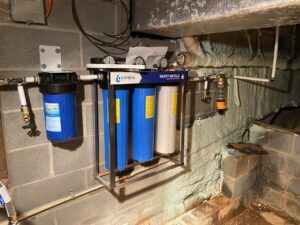
Whole House Water Filtration Systems: Pure Bliss at Home
Whole house water filtration systems provide clean and safe water for your
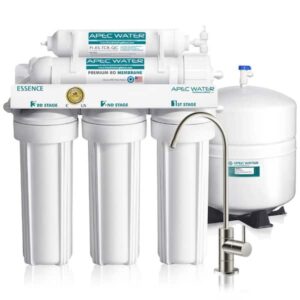
Reverse Osmosis Water Filter System: Pure Hydration
A Reverse Osmosis Water Filter System purifies water by forcing it through

Kitchen Comedy: Stirring Up Laughs with Food Fails
Kitchen Comedy is a web series featuring comedian and chef, JP Lambiase,
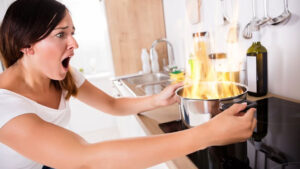
Kitchen Mishaps: Quick Fixes for Common Blunders
Kitchen mishaps can be frustrating and even dangerous. We will discuss common

Stress Management Techniques in Home: Unwind & Recharge
Stress management techniques can be practiced at home. These techniques can include
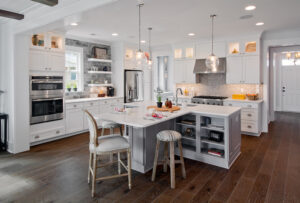
Kitchen Appliance Placement Secrets for Optimal Flow
Kitchen appliance placement should be strategic and practical to ensure efficient use

Hilarious Kitchen Memes: Feast Your Eyes & Chuckle!
Hilarious kitchen memes are a popular form of comedic entertainment, often featuring

Funny Kitchen Quotes: Spice Up Your Cooking Vibes!

Artificial Kitchen Design: Trends Transforming Homes!
Artificial kitchen design refers to the use of technology and automation in
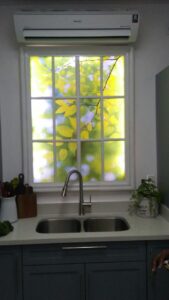
Artificial Kitchen Windows: Illuminate Your Space!
Artificial kitchen windows are a modern solution to adding natural light and
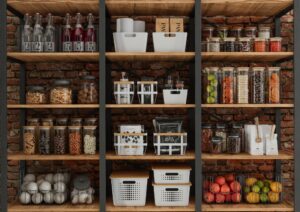
Japanese Kitchen Storage Solutions: Maximize Your Space!
Japanese kitchen storage is highly efficient and maximizes space utilization. It features
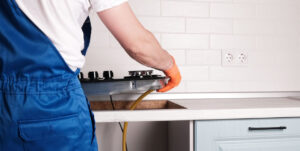
Kitchen Technician near Me: Expert Solutions at Hand
For a kitchen technician near you, search online or check local directories.
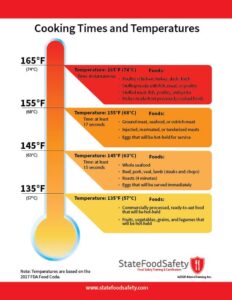
Safe Cooking Temperatures: Ensure Deliciously Safe Meals!
Safe cooking temperatures are crucial to prevent foodborne illnesses. The recommended cooking

Part-Time Kitchen Cleaning Jobs: Quick Cash & Flexibility
Part-time kitchen cleaning jobs are available for individuals seeking flexible work schedules

Functional Kitchen Storage Solutions to Declutter Your Space
Functional Kitchen Storage can be achieved through clever organization and efficient use
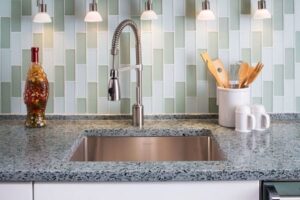
Eco-Friendly Kitchen Countertops: Sustainable Chic
Eco-friendly kitchen countertops are a sustainable and environmentally conscious option for modern
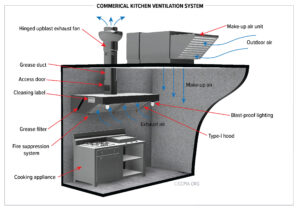
Kitchen Ventilation System Essentials: Breathe Easy at Home
A kitchen ventilation system is designed to remove smoke, heat, and grease

Healthy Cooking Techniques: 5 Simple Secrets Revealed
Healthy cooking techniques involve using methods that retain the nutrients in food
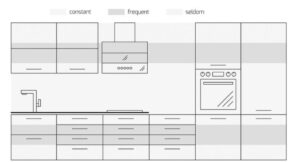
Ergonomic Kitchen Design: Enhance Comfort & Style
Ergonomic kitchen design is essential for creating a functional and comfortable space.

Pressure Cooker for Quick Healthy Meals: Fast & Nutritious
A pressure cooker is a perfect tool for preparing quick and healthy
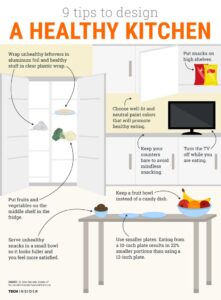
Healthy Kitchen Layout Secrets: Design for Well-Being
A healthy kitchen layout promotes safety, efficiency, and well-being. Designing a layout

Energy-Efficient Kitchen Appliances: Slash Bills & Eco Guide
Energy-efficient kitchen appliances can save you money and reduce your carbon footprint.

Air-Purifying Plants for Kitchen: Freshen Your Space!
Air-purifying plants are a great addition to your kitchen. Here’s why. Indoor


